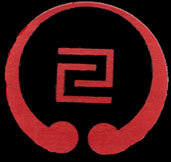
MEANING OF KARATE - DO
" He who knows others is wise ;He who knows himself is enlightened.
He who conquers others is strong ;
He who conquers himself is mighty .
He who knows contentment is rich ;
He who keeps on his course with energh has will .
He who does not deviate from his proper place will long endure .
He who may die but not perish has longevity ."
Tao Te Ching by Lao Tzu ...
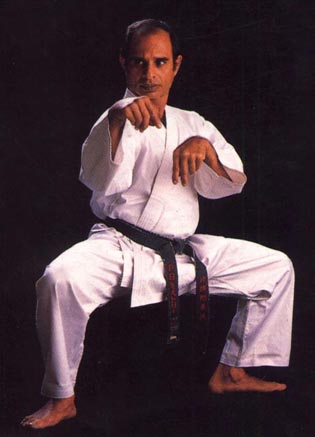 Karate , translates to " empty hand "and implies weaponless self -
defence . " Do " means " way of life" . Thus " Karate - Do "
means to practise the art of karate as a way of life . The serious student of
Karate - Do finds Karate becoming a part of his life. Karate -Do cultivates
the virtues of humility , concern for others , patience and strength .It
delevops the mind and strengthens the body and teaches us to concentrate on
spiritual values instead of monetary pleasure or material possession.
Karate , translates to " empty hand "and implies weaponless self -
defence . " Do " means " way of life" . Thus " Karate - Do "
means to practise the art of karate as a way of life . The serious student of
Karate - Do finds Karate becoming a part of his life. Karate -Do cultivates
the virtues of humility , concern for others , patience and strength .It
delevops the mind and strengthens the body and teaches us to concentrate on
spiritual values instead of monetary pleasure or material possession. THE KATA
 " In sparring you have an opponent and its easy to move because you adapt to
the movements of your opponent . In kata there is only space .You and space . There
is no opponent , nothing to grasp . You imagine and aim for your opponent. When you
practice , say you set a goal for 100 repetations , when you get to about the
sixtieth or seventieth repetation , you tire and begin to weaken mentally . Then
you force yourself to do one more and then one more after that.It is through this
accumulated effort that you train yourself. "
" In sparring you have an opponent and its easy to move because you adapt to
the movements of your opponent . In kata there is only space .You and space . There
is no opponent , nothing to grasp . You imagine and aim for your opponent. When you
practice , say you set a goal for 100 repetations , when you get to about the
sixtieth or seventieth repetation , you tire and begin to weaken mentally . Then
you force yourself to do one more and then one more after that.It is through this
accumulated effort that you train yourself. "
Quote Unquote - Higaonna Sensei
Karate techniques embody many of the most rapid and effective ways of defencing against , and counter-attacking an aggressor. But karate traning goes beyond the limits of self defence when these techniques are combined together in long sequences , or kata .Karate kata are built up from stances ,movements , strikes and counters ,which are linked together by more advanced actions, such as turns, evasions , combined attack and defence , locks , throws and feints . Every kata is given its own name .There are totally 13 kinds of goju-ryu kata and 18 in the shorin-ryu style .Kata are performed in a choreographed pattern .
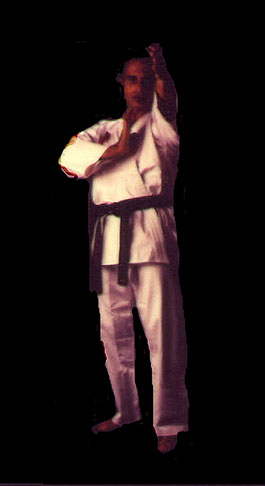
Each detail of the movement is taught to the novice , and the sets of movements performed last for a minute or more . These movements are carried out in many different directions but they're made essentially in lines rather than in circles. Movements may be forward , backward , to the side or diagonally from the starting position. Locks or blocks performed in one direction are often repeated along opposite axis to give an appearance of symmetry ,and great emphasis is placed upon the perfection of every aspect of performance. Timing, focus ,balance , economy and harmony of the breath , body, and spirit are the aims of the performer when following movements of a Kata. Although they are usually given as group performances ,there is no confrontation of opponents in a kata , which is designed to be performed alone ,so that there is no one but the selfconfronts of the performer.
HOJOUNDO
( Supplementary Traning )
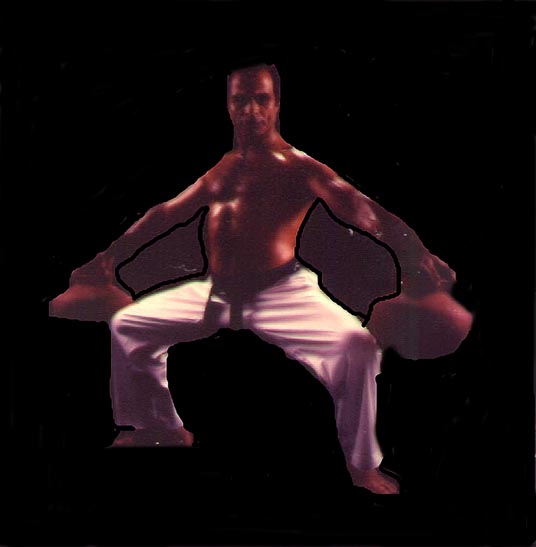 The Supplementary exercises are practised with various aids to develop physical strength ,
stamina , speed and muscle coordination. These exercises are very useful for basic traning .
If students understand the principle behind each exercise and practise them ,then these
exercises can increase abitily and body movement .
The Supplementary exercises are practised with various aids to develop physical strength ,
stamina , speed and muscle coordination. These exercises are very useful for basic traning .
If students understand the principle behind each exercise and practise them ,then these
exercises can increase abitily and body movement . It is important to do these exercises regularly for a long time and then you will find your physical strength increases greatly . These can also help you get out of " Slump " which you might have been facing for a long time . Developing physical strength takes time , so do not expect immediate results.
CHISHI ( Stone Lever Weight )
The Chishi is used mainly to strenghten your grip and wrists. In addition ,the exercises with the Chishi also help to strenghten the shoulder , the elbow and the wrist joints. Exercising with the Chishi also gives sharpness of movement when doing tsuki ( thrust or punch ),shuto uke ( knife hand block ), nagashi uke (flowing block) and hiki uke ( grasping block ). Moreover, exercising with the Chishi develops muchimi (heavy sticky hand ) and intensity in your movements.
SANCHIN
( THE BREATHING KATA )
When a baby is born , it is with the first slap of the Doctors hand that the cycle of breath begins and dosen't stop till the time of death , perhaps seventy or even eighty years aheadTruly , breathing is the source of life . This simple in and out movement of air upon breathing can motivate as well as control all other mental and physical functions of every person .
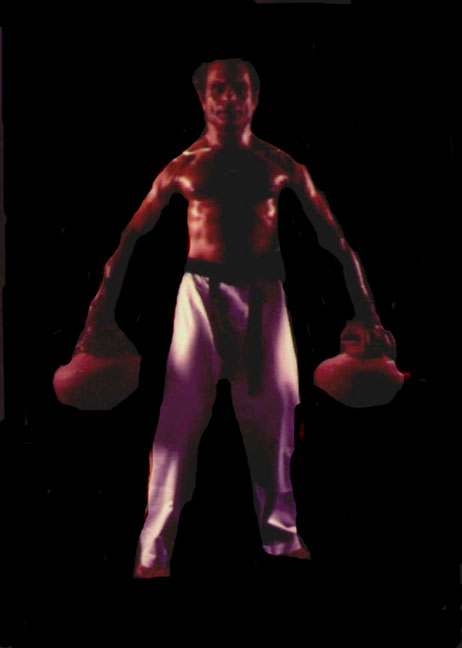 The entire study of YOGA is based on PRANIC ( voluntary and involuntary ) methods
of breathing techniques . Hanshi Chojun Miyagi obviously understood the regenerative
and health benefits of the two most important methods of breathing. Sanchin and Tensho.
Originally Sanchin Kata was performed with two 180 degree turns , but was restructured
by Hanshi into a linear form without any turns . This was done with the idea of improving
and enhancing the sixth sense or greater awareness of the practitioner . The advance
students learns to concentrate through the physical and breathing applications of the Kata
to eventually lead him to meditative exercise simultaneously . Therefore when the breath is
inhaled , the cosmic energy ( K I ) is actually permitating and thus relaxing the
body to prepare it for the forth coming expulsion of air which tenses the body and locks the
energy ( K I ) within .
The entire study of YOGA is based on PRANIC ( voluntary and involuntary ) methods
of breathing techniques . Hanshi Chojun Miyagi obviously understood the regenerative
and health benefits of the two most important methods of breathing. Sanchin and Tensho.
Originally Sanchin Kata was performed with two 180 degree turns , but was restructured
by Hanshi into a linear form without any turns . This was done with the idea of improving
and enhancing the sixth sense or greater awareness of the practitioner . The advance
students learns to concentrate through the physical and breathing applications of the Kata
to eventually lead him to meditative exercise simultaneously . Therefore when the breath is
inhaled , the cosmic energy ( K I ) is actually permitating and thus relaxing the
body to prepare it for the forth coming expulsion of air which tenses the body and locks the
energy ( K I ) within . The Tensho Kata was invented by Hanshi to complement the " GO " elements of Sanchin to the " JU " elements of Tensho . Performed by the advanced practitioner , this Kata can bring a feeling of awe to anybody watching it .
